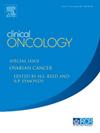The National Referral Service for Proton Beam Therapy in England: A Journey Towards Equitable Access
IF 3
3区 医学
Q2 ONCOLOGY
引用次数: 0
Abstract
Aim
Health care policies have frequently centred on ensuring equitable access within diverse populations. While new technologies have immense potential for improving health outcomes, they may not be necessarily available across varied geographical areas and socioeconomic backgrounds. The goal of this study is to analyse equity of access to Proton Beam Therapy (PBT) throughout England and how this has changed since the inception of a national PBT service in 2018.
Materials and methods
The Proton Utilisation Proportion (PUP) is the ratio between treated and newly diagnosed patients, which measures the proportion of eligible patients using the technology. These figures were provided for 7 of the most prevalent PBT cancer indications for the period 2013-2019. The first national NHS PBT centre began accepting referrals in October 2018, hence this time period was divided into pre-NHS PBT and post-NHS PBT.
Results
For the seven most common PBT cancer indications, the total number of newly diagnosed patients was 1686 before NHS PBT and 381 after NHS PBT. The number of treated patients was 479 in the pre-NHS PBT era and 180 afterwards. Overall, the PUP in England grew post-NHS PBT by 66%. More specifically, there is an increase in the PUP between the pre-NHS and post-NHS PBT for any diagnostic category and age group analysed. Among the diagnostic categories analysed, the greatest increase is seen in Medulloblastoma, which became a commissioned indication for PBT in 2016. By age group, post-NHS PBT the most noticeable increase is seen for the age group 16-24.
Conclusion
Promoting equal access to cutting-edge radiation technology is central to NHS England's core values. The PUP has expanded since the establishment of a National PBT service in England, which employs a central web-based Proton Referral Pathway overseen by a National Proton Office. Further investigation will be conducted to determine whether socioeconomic or geographic barriers exist between different areas.
英国质子束治疗的国家转诊服务:通往公平获取的旅程
医疗保健政策的重点往往是确保在不同人群中公平获得服务。虽然新技术在改善健康结果方面具有巨大潜力,但不一定在不同的地理区域和社会经济背景中都能获得。本研究的目的是分析整个英格兰获得质子束治疗(PBT)的公平性,以及自2018年国家PBT服务成立以来,这种情况发生了什么变化。材料和方法质子利用比例(PUP)是已治疗患者和新诊断患者之间的比例,用于衡量使用该技术的合格患者的比例。这些数据是针对2013-2019年期间7种最普遍的PBT癌症适应症提供的。第一个国家NHS PBT中心于2018年10月开始接受转诊,因此这段时间分为前NHS PBT和后NHS PBT。结果在7种最常见的PBT肿瘤适应症中,NHS PBT前新诊断患者总数为1686例,NHS PBT后新诊断患者总数为381例。在nhs之前的PBT时代,接受治疗的患者人数为479人,之后为180人。总体而言,英国的PUP在nhs后的PBT增长了66%。更具体地说,对于任何诊断类别和年龄组的分析,nhs前和nhs后的PBT之间的PUP都有所增加。在分析的诊断类别中,髓母细胞瘤的增幅最大,这在2016年成为PBT的委托适应症。按年龄组划分,后nhs PBT最显著的增长是16-24岁年龄组。结论促进平等获得尖端放射技术是英国国民健康服务体系的核心价值。自从在英国建立了国家质子bt服务以来,PUP已经扩大了,该服务采用了由国家质子办公室监督的基于网络的中央质子转诊途径。将进行进一步调查,以确定不同地区之间是否存在社会经济或地理障碍。
本文章由计算机程序翻译,如有差异,请以英文原文为准。
求助全文
约1分钟内获得全文
求助全文
来源期刊

Clinical oncology
医学-肿瘤学
CiteScore
5.20
自引率
8.80%
发文量
332
审稿时长
40 days
期刊介绍:
Clinical Oncology is an International cancer journal covering all aspects of the clinical management of cancer patients, reflecting a multidisciplinary approach to therapy. Papers, editorials and reviews are published on all types of malignant disease embracing, pathology, diagnosis and treatment, including radiotherapy, chemotherapy, surgery, combined modality treatment and palliative care. Research and review papers covering epidemiology, radiobiology, radiation physics, tumour biology, and immunology are also published, together with letters to the editor, case reports and book reviews.
 求助内容:
求助内容: 应助结果提醒方式:
应助结果提醒方式:


